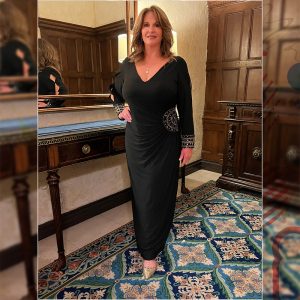The Art of Interior Design: Creating Functional and Aesthetic Spaces


Interior design is much more than just arranging furniture and picking out color schemes; it’s an art form that combines creativity, practicality, and an understanding of human psychology. A well-designed interior space can significantly impact our mood, productivity, and well-being. This article delves into interior design, exploring the elements that contribute to creating functional and aesthetic spaces.
The Power of Interior Design
Interior design is a discipline that goes beyond the superficial. It considers how a space feels, functions, and flows. When done right, interior design can transform a mere room into a sanctuary, an office into a productivity hub, and a house into a home. It’s the art of harmonizing aesthetics and functionality.
Balancing Form and Function
One of the fundamental principles of interior design is achieving a harmonious balance between form and function. Form refers to the aesthetics of a space, encompassing elements like color, texture, pattern, and furniture arrangement. Function, conversely, deals with the practical aspects, such as ensuring the space serves its intended purpose efficiently.
Creating Harmony with Color
Color is a powerful tool in interior design. It can set the mood of a room, influence our emotions, and even alter our perception of space. Warm colors like reds and yellows can create a cozy, intimate atmosphere, while cool colors like blues and greens make a space feel more tranquil and spacious. The choice of color should align with the intended purpose of the room. For instance, a vibrant red might be a great choice for a dining room, but it may not be suitable for a bedroom, where calmness is often desired.
The Magic of Texture and Pattern
Texture and pattern are elements that add depth and character to a space. A room with various textures, such as a plush rug, leather sofa, and satin curtains, feels more inviting and interesting. Patterns, like geometric prints or floral motifs, can be used strategically to create focal points or add a touch of personality to a room. It’s essential to strike the right balance, as an excessive mix of patterns and textures can become overwhelming.
Furniture Arrangement and Flow
The furniture arrangement plays a pivotal role in the functionality of a space. Interior designers consider traffic flow, balance, and scale when deciding where to place furniture. A well-thought-out furniture arrangement ensures that a room looks good and feels comfortable and functional. It’s about creating spaces that are easy to navigate and conducive to the intended activities.
Lighting as an Artistic Element
Lighting is often underestimated but is a critical element of interior design. It can dramatically affect the ambiance of a room. Natural light is ideal and should be maximized whenever possible. For artificial lighting, various fixtures, such as chandeliers, pendant lights, and sconces, can be chosen to enhance the aesthetic appeal of a space. Lighting also serves functional purposes, such as task lighting for reading or cooking and ambient lighting for creating a cozy atmosphere.
The Art of Space Planning
Space planning allocates and arranges furniture and other elements within a room to achieve optimal functionality and aesthetics. It involves carefully considering the size and shape of the room, the location of windows and doors, and the placement of electrical outlets and fixtures. Space planning is crucial in small or oddly shaped spaces, where every inch counts.
The Psychology of Interior Design
Beyond the physical aspects, interior designers delve into the psychological dimensions of design. They aim to create spaces that evoke desired emotions and behaviors. For example, a well-designed office space can boost productivity and creativity, while a cozy living room can promote relaxation and social interaction. Understanding how colors, lighting, and layout can influence our psychology is a crucial skill for interior designers.
The Role of Accessories and Artwork
Accessories and artwork are the finishing touches that can elevate a space from ordinary to extraordinary. These items inject personality and style into a room. Accessories, like throw pillows, rugs, and decorative vases, can add pops of color and texture. Artwork, whether paintings, sculptures, or photographs, provides a focal point and reflects the homeowner’s tastes and interests. Choosing the right accessories and artwork is an art in itself, requiring a keen eye for balance and aesthetics.
Interior design is a multifaceted art that goes beyond mere decoration. It’s about creating spaces that look beautiful and function seamlessly. A well-designed interior can profoundly impact our lives, influencing our mood, productivity, and overall well-being. By mastering the art of interior design, we can transform our homes and workplaces into functional and aesthetic havens that enrich our lives. Whether you’re designing a cozy bedroom, a stylish living room, or a productive office, the principles of interior design can guide you in creating beautiful and functional spaces.
